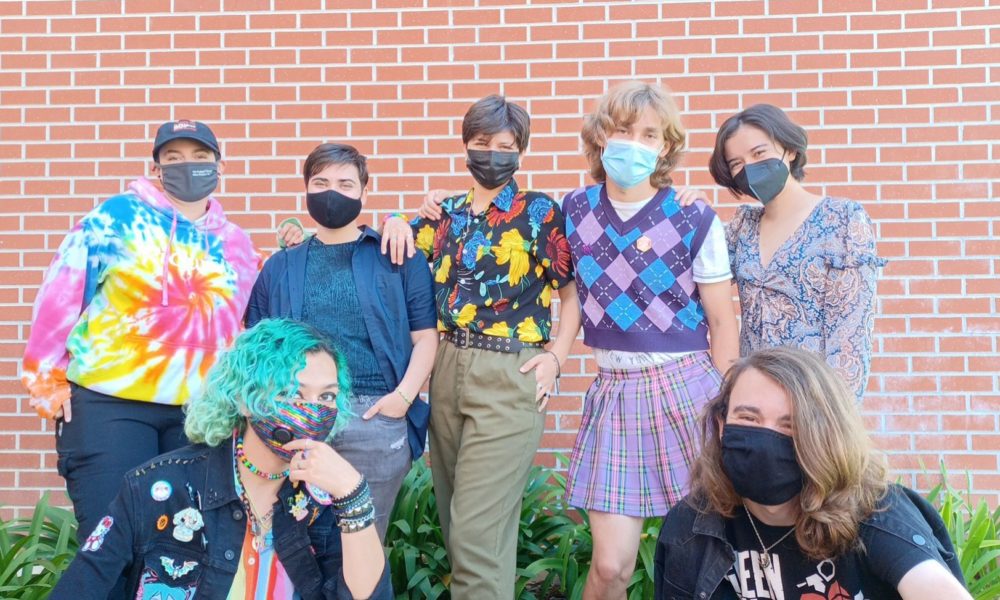From Balenciaga to Dior, high fashion designers influence what is trendy to wear, and many of these famous designers are part of the LGBTQ+ community.
High fashion is often regarded as a privilege to wear but soon after the runway, designs are adopted into everyday clothes in different ways. Throughout the history of fashion, LGBTQ+ designers have had a great influence on style trends.
One of those people is French designer Jean-Paul Gaultier, who is an example of how fashion never has to fit in a single box for anyone and that people should challenge standard views of fashion.
In 1985, Gaultier debuted his show “Et Dieu créa l’Homme,” which translates to “And God created Man.” The show played with the idea of masculinity, as he introduced his men’s skirt suit, causing controversy at the time. Gaultier used male skirts as a rejection of previous generations that reinforce the gender binary through clothing.
Early in his 50-year career, Gaultier would draw inspiration from his sexuality to make designs. His first men’s’ ready to wear 1983 collection, “Boy Toy.” was inspired by the 1982 film “Querelle,” whose lead Gaultier described as a “hypersexualized gay symbol.” The collection used stripes in tops for men and women and sailor hats that revived the marinière aesthetic.
Designing skirts for all and creating feminine looks from concepts thought only as masculine are just a few of the style influences that Gaultier has had on fashion today.
Designer Walter Van Beirendonck’s exploration with his sexuality and expression created a world of eccentric fashion that accentuates bodily proportions. Beirendonck is a member of the Antwerp Six, one of the most influential groups in fashion because of their unique aesthetics in designs.
The 64-year-old Belgian designer described being part of the LGBTQ+ community as something very natural. In a 2020 interview with Your Fashion Archive, he said that “being gay and being part of the LGBT subculture always felt very natural, very normal always felt welcome in this world.”
Beirendonck’s designs make a bold statement about being gay and feature pastel colors and bold patterns with underlying sexual imagery. In his 1996 show “Wild Lethal Trash,” one of his most notable looks was the He-Man inflatable jacket. The jacket, which was modeled to give the wearer big arms reminiscent of action figures, was made from a latex material symbolizing condoms, a stark contrast between childhood and the Aids epidemic.
Beirendonck used his designs to create something meaningful and fashionable. He created a jacket that can be seen modeled by the puffer-jackets that have become popular in streetwear again.
Jil Sander, a lesbian designer renowned for her minimalistic androgynous clothing, is another influence in fashion today. She launched her self-titled fashion house in 1968 and changed the way consumers viewed gendered clothing. She combined the simplicity and utilitarianism of male garments with the delicacy and luxury of female garments.
The German designer managed to keep her direct influence on androgynous fashion through a long career. From 1999 until 2005 she worked in collaboration with Prada after the fashion house purchased her brand. Sander has also worked with Uniqlo, a popular Japanese fast-fashion company, to create her +J collections.
Having more designers, such as Sanders, that create collections of androgynous looks not only is a fashion trend other designers should include in their work, but it also creates a platform for members of the LGBTQ+ community to be recognized in the fashion industry.
Designers not only influence others but inspire each other as well. American Fashion designer Rick Owens, released his Spring 2014 Ready-to-Wear collection that featured his own take on male skirts.
Owens was not able to freely express himself growing up in a conservative household. In an article Owens wrote for Business of Fashion in 2016, he shared that when he moved to Los Angeles in 1994, he unleashed his creativity and the young bisexual relished in his freedom by wearing makeup, platform boots, and cloaks.
The designer has gone on to create his own grunge, glamorous gender-defying aesthetic, earning the nickname “The Darklord of Fashion.” His designs feature long shirts, cloaks, skirts and leather boots with massive heels. All of which have become more popular within the last few years.
Owens is more popular than he has ever been and his clothes are worn by people such as Michelle Obama, Kanye West and Justin Bieber. Having influential people wear clothes from designers like Owens creates popularity in trends and many may not know that these trends were created by LGBTQ+ designers.
Christina Merino contributed to this story.




